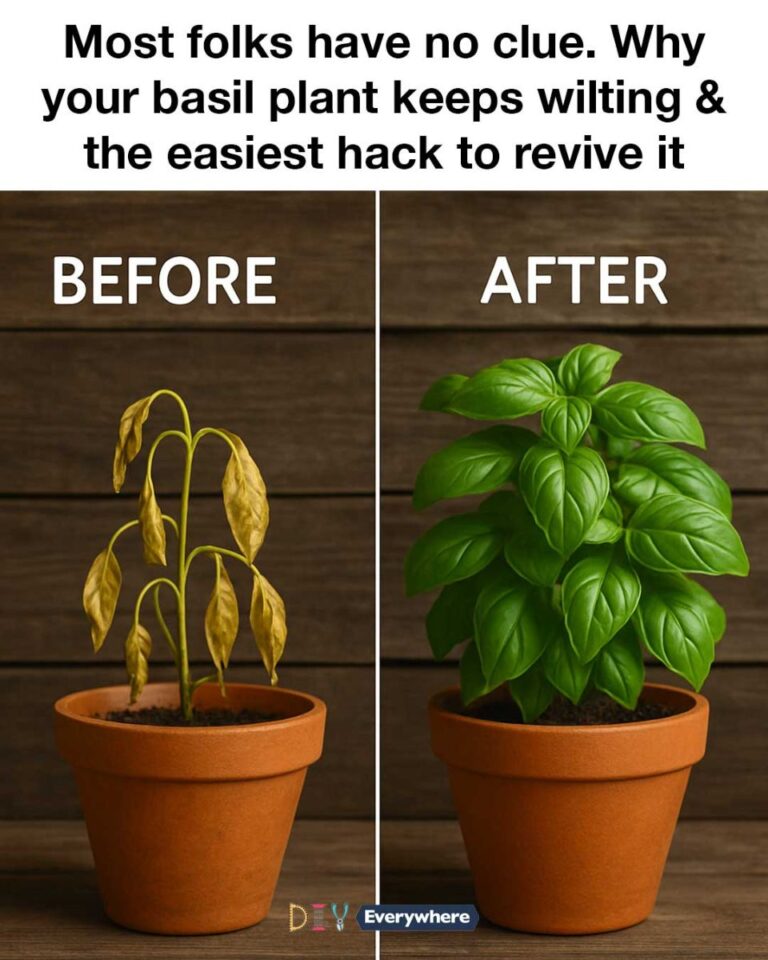Basil is highly sensitive to temperature fluctuations. Exposure to temperatures below 50°F (10°C) can cause the leaves to turn black and wilt. On the other hand, temperatures above 90°F (32°C) can also stress the plant, leading to wilting.
To protect your basil from temperature extremes, consider bringing potted plants indoors during cold spells or providing shade during the hottest part of the day. Consistent temperatures within the optimal range will help maintain your basil’s health.
5. The Role of Sunlight in Basil Growth
Sunlight is a critical factor in basil’s growth and overall health. Basil plants require a minimum of 6 to 8 hours of direct sunlight daily to perform photosynthesis effectively. Without sufficient light, the plant’s growth will be stunted, and it may begin to wilt.
If you’re growing basil indoors, place it near a south-facing window or use grow lights to supplement natural light. Regularly rotate the plant to ensure all sides receive equal sunlight exposure.
6. Soil Quality: What Your Basil Needs
Basil thrives in well-draining, nutrient-rich soil. A soil mix that contains a combination of potting soil, perlite, and compost will provide the necessary drainage and nutrients. The ideal pH for basil is between 6.0 and 7.5.
Regularly check the soil’s condition and replenish nutrients by adding organic fertilizers or compost. Avoid using heavy clay soils, as they retain too much moisture and can lead to root rot.
7. Recognizing Signs of Pests and Diseases
Pests such as aphids, spider mites, and whiteflies can cause basil leaves to wilt by sucking the sap from the plant. Regularly inspect your basil for signs of pests, such as sticky residue or tiny insects on the leaves.
Diseases like downy mildew and fusarium wilt can also affect basil. Look for yellowing leaves, dark spots, or a fuzzy growth on the underside of leaves. Promptly remove affected leaves and treat the plant with organic pesticides or fungicides as needed.
8. The Impact of Overcrowding on Basil Plants
Overcrowding basil plants can lead to competition for resources such as light, water, and nutrients, resulting in wilting. Each basil plant should have enough space to allow air circulation and prevent the spread of diseases.
When planting basil, space each plant at least 12 inches apart. If growing in pots, ensure each pot is large enough to accommodate the plant’s root system and allows for proper drainage.
9. Viral Hack: Using Epsom Salt to Revive Basil
Basil is highly sensitive to temperature fluctuations. Exposure to temperatures below 50°F (10°C) can cause the leaves to turn black and wilt. On the other hand, temperatures above 90°F (32°C) can also stress the plant, leading to wilting.
To protect your basil from temperature extremes, consider bringing potted plants indoors during cold spells or providing shade during the hottest part of the day. Consistent temperatures within the optimal range will help maintain your basil’s health.
5. The Role of Sunlight in Basil Growth
Sunlight is a critical factor in basil’s growth and overall health. Basil plants require a minimum of 6 to 8 hours of direct sunlight daily to perform photosynthesis effectively. Without sufficient light, the plant’s growth will be stunted, and it may begin to wilt.
If you’re growing basil indoors, place it near a south-facing window or use grow lights to supplement natural light. Regularly rotate the plant to ensure all sides receive equal sunlight exposure.
6. Soil Quality: What Your Basil Needs
Basil thrives in well-draining, nutrient-rich soil. A soil mix that contains a combination of potting soil, perlite, and compost will provide the necessary drainage and nutrients. The ideal pH for basil is between 6.0 and 7.5.
Regularly check the soil’s condition and replenish nutrients by adding organic fertilizers or compost. Avoid using heavy clay soils, as they retain too much moisture and can lead to root rot.
7. Recognizing Signs of Pests and Diseases
Pests such as aphids, spider mites, and whiteflies can cause basil leaves to wilt by sucking the sap from the plant. Regularly inspect your basil for signs of pests, such as sticky residue or tiny insects on the leaves.
Diseases like downy mildew and fusarium wilt can also affect basil. Look for yellowing leaves, dark spots, or a fuzzy growth on the underside of leaves. Promptly remove affected leaves and treat the plant with organic pesticides or fungicides as needed.
8. The Impact of Overcrowding on Basil Plants
Overcrowding basil plants can lead to competition for resources such as light, water, and nutrients, resulting in wilting. Each basil plant should have enough space to allow air circulation and prevent the spread of diseases.
When planting basil, space each plant at least 12 inches apart. If growing in pots, ensure each pot is large enough to accommodate the plant’s root system and allows for proper drainage.
9. Viral Hack: Using Epsom Salt to Revive Basil

